Questions about the use of the wood species sweetgum in eighteenth century Delaware River Valley furniture from the last post reminded me of a high chest that sold at Sotheby’s a decade ago this month.

It was most likely made in Philadelphia and should be dated after 1735 when rails similar in thickness to the carcase sides and cockbeads or ovolo-mouldings were first adapted by English cabinetmakers. The high chest was probably made shortly before or after 1740. Most Delaware River Valley case work is made from solid boards. This chest, however, has drawer fronts that are veneered with spectacularly grained mahogany and the rails are cross-banded similarly. When I examined the chest, I found the veneered drawer fronts were made of sweetgum. The sides and backs of the drawers were yellow poplar and the drawer bottoms were riven Atlantic white cedar. In addition, hard pine was used as the substrate for the veneered rails and other internal elements. Figured mahogany can be found veneered on maple, cherry, hard pine, and even plain grained mahogany drawer fronts in eighteenth-century Delaware River Valley furniture. In this instance, the maker chose to use sweetgum.
While the construction of the carcase is up to date, the drawer construction is a mix of drawers running on their nailed-on bottoms and drawers that have raised bottoms with applied runners. The drawer sides, bottom, and runners are visible at the sides of the drawers. This drawer construction was adopted shortly after 1700 by London furniture makers to reduce friction inherent in the earlier mode of construction with drawers running on their full width.
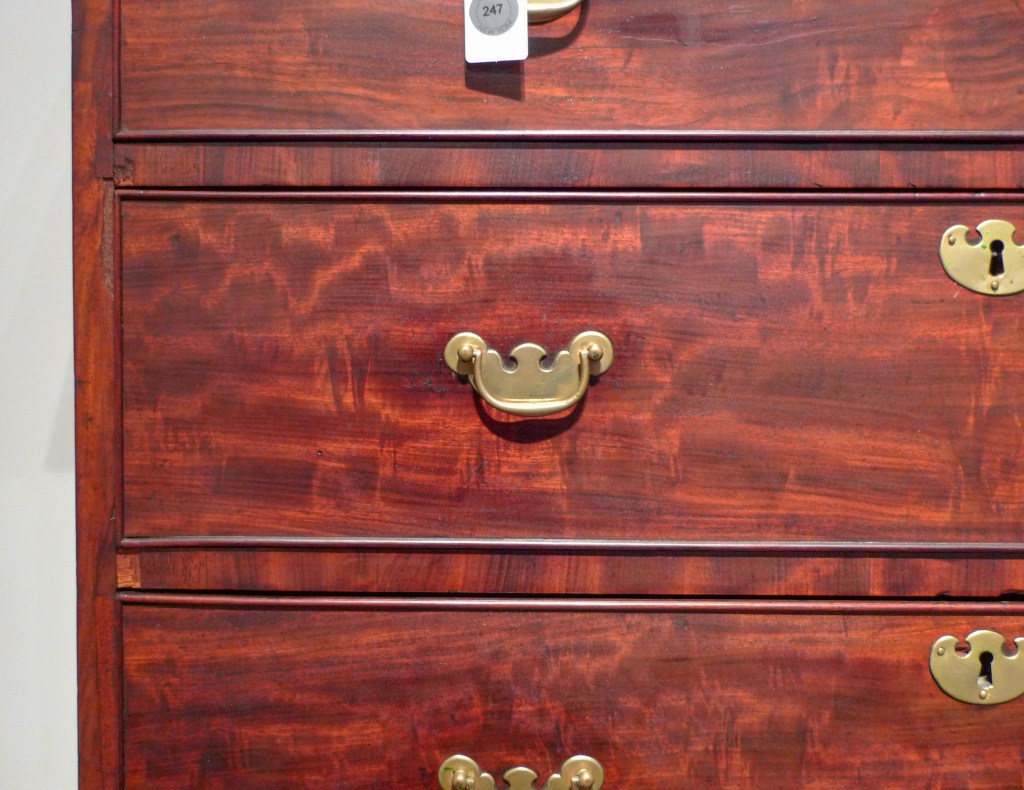
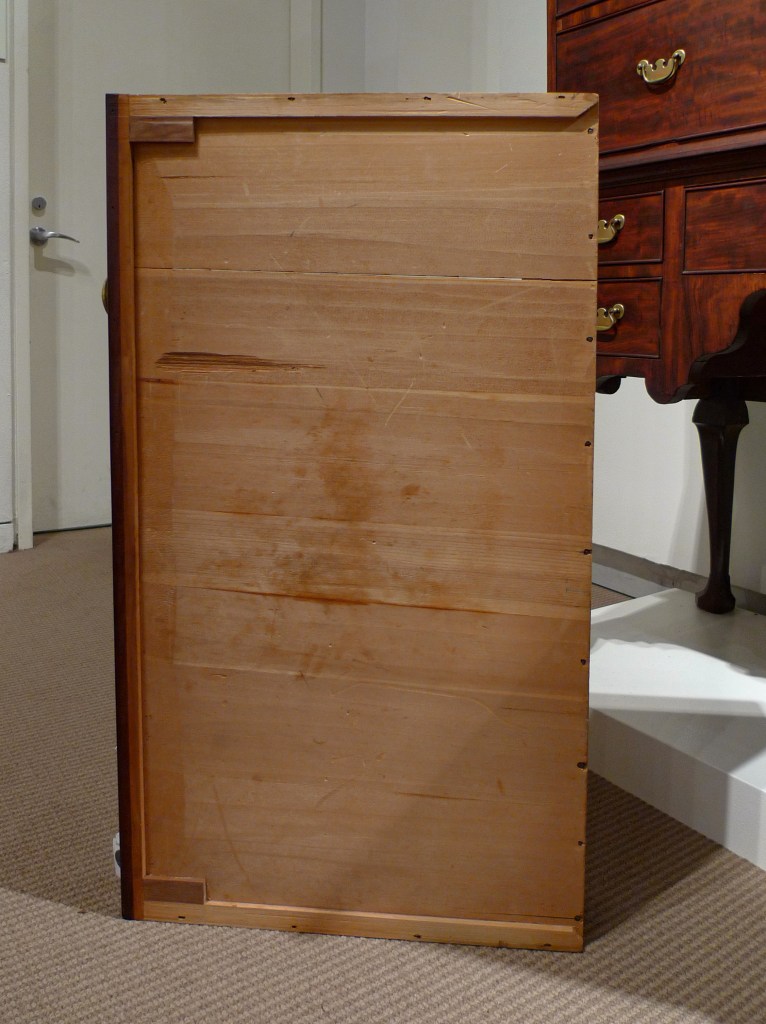

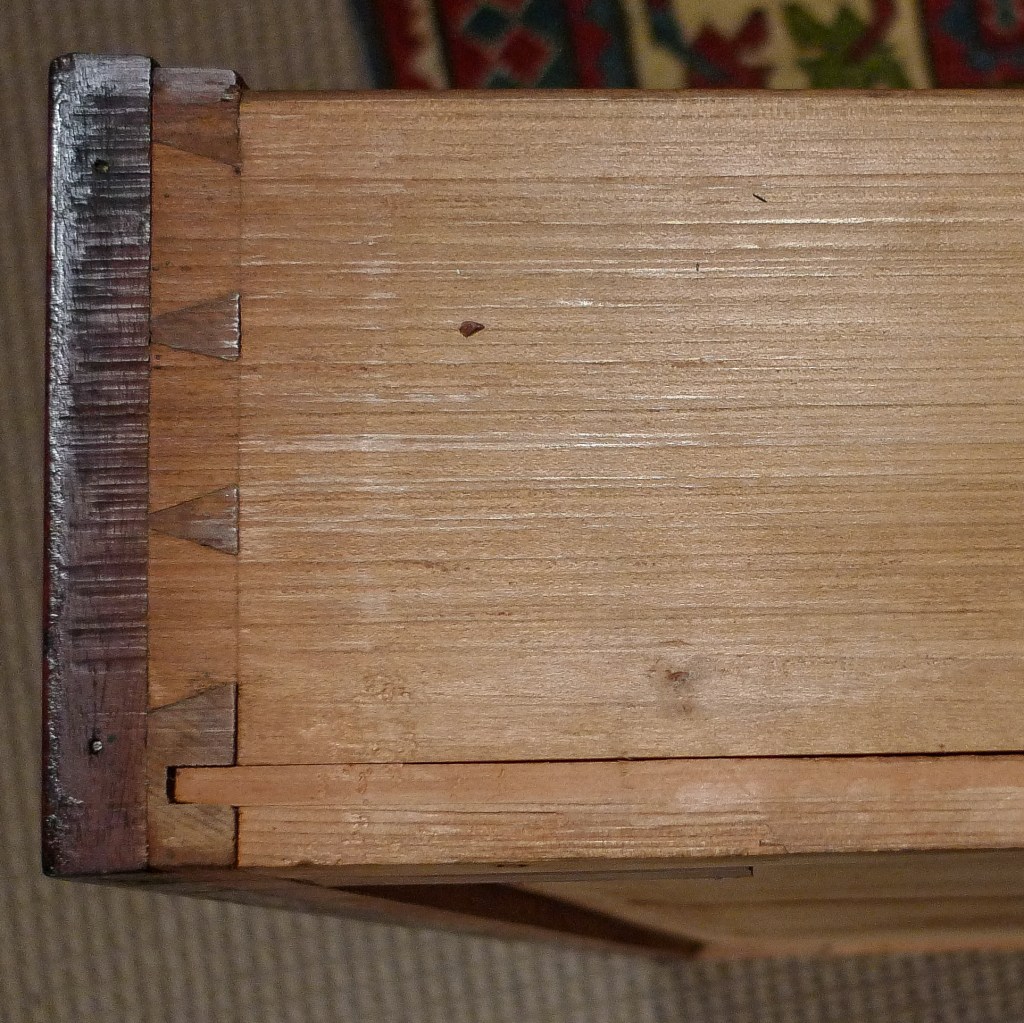
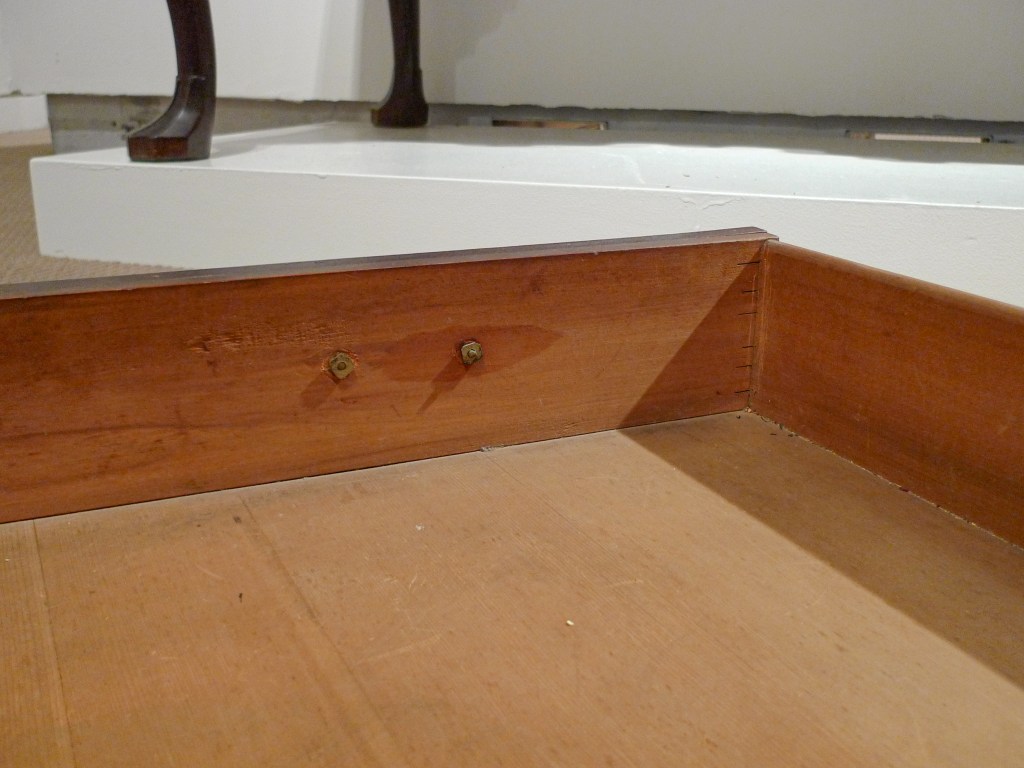
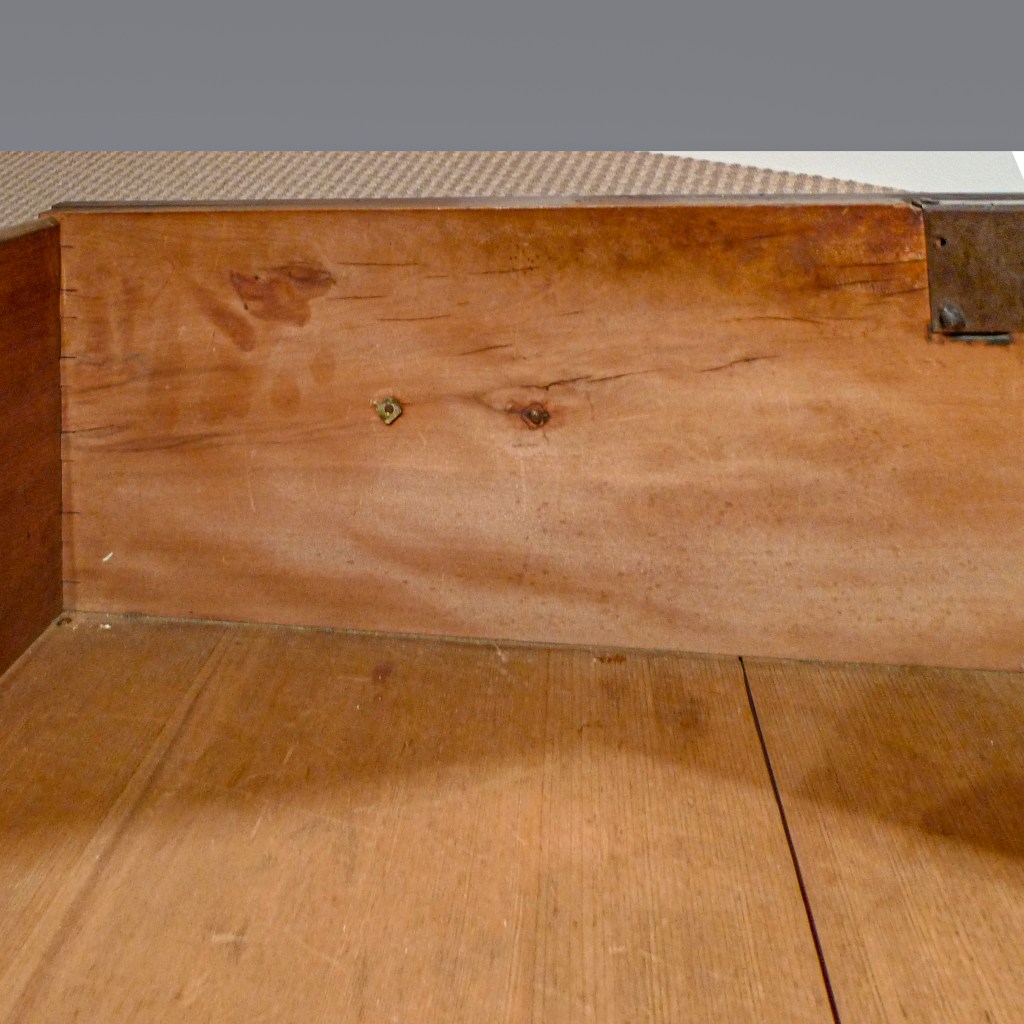
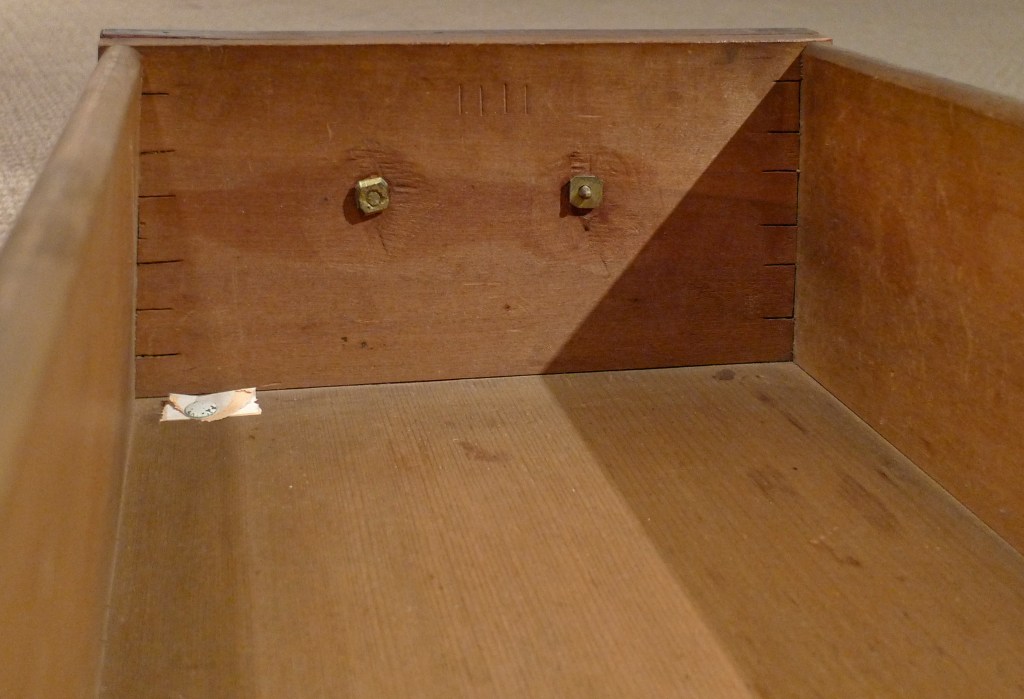
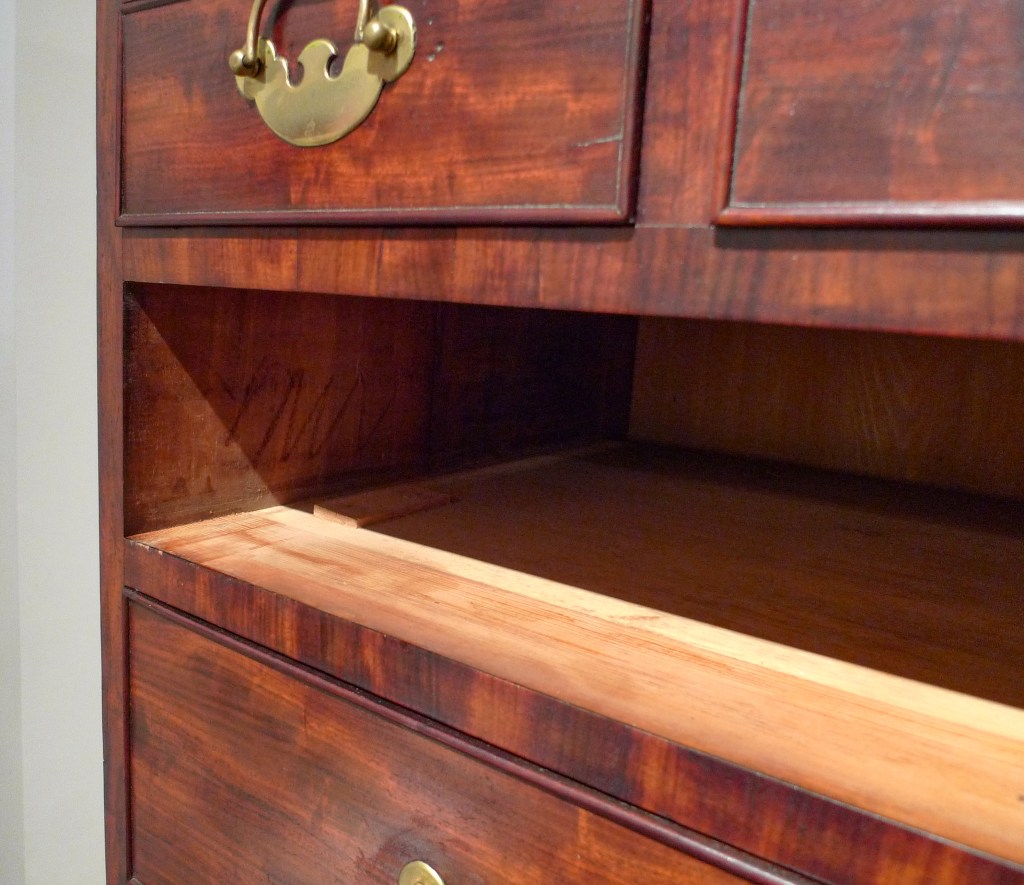
Sweetgum is the same as Red Gum, correct? I have always referred to this wood/tree as red gum, I don’t know why perhaps the reddish color of the wood. Not a very popular tree here in Charlotte NC because of those spiny brown balls that drop by the thousands in winter after they shed their leaves. These trees get big, I have 3 HUGE sweetgum trees in my yard which some neighbors have offered to pay to cut down & plant a different species. Considering their size at 70-80 feet tall, my sweet/red Gum trees aren’t going anywhere but I do agree those “gumballs” are a pain, especially if you step on one barefooted, and not real easy to rake up either.
Yes, the same species. Sweetgum has many popular names. I use “sweetgum” these days as it refers to the first part of the binomial, which can translate to liquid amber which refers to the trees gum resin.
The tree is common around here, you do have to deal with the spiked seed pods. Still haven’t found any local furniture that used it as a primary wood. Seems odd when it was used so frequently in North Jersey and New York.
When I asked about the use of sweetgum in Philadelphia furniture it was because I had just acquired a small, very well made chest of drawers whose drawer sides and backs were of a wood that I did not immediately recognize. This came in about the same time as your post on the John Folwell chest on chest. I then realized the wood in question was sweetgum. Along with this realization came the question of how common was the use of this wood in Philadelphia furniture. My personal acquaintance with using this wood is that it is not as easy to work as tulip poplar and that it tends to be “waney”. Based on this experience, I wondered if there was a particular reason for its use or if there was a furniture maker (or makers) for whom this might be an individual predilection.
I know of no documentation as to why cabinetmakers in the Delaware River Valley used sweetgum instead of hard pine or yellow poplar, the two wood species most commonly used for drawer sides and backs. This is not surprising – virtually no personal reminisces of those who worked in trades have come down to us. Perhaps the earliest reference to sweetgum are the 7 sets of bedstead pillars in the Philadelphia joiner Charles Plumley’s inventory taken in 1708. John Head debited for over 50 besteads but did not record wood species for any of his beds. He purchased sweetgum, but so far we have found that species used only to make the corner blocks in his dressing tables and high chest bases. None of his beds have been identified so we don’t know if he was using sweetgum for them as Plumley was.
It’s an on-going question as to how much sweetgum was sawn for furniture making and why cabinetmakers at times chose it over another species. What we can say, is that there are makers where every piece documented or attributed to them employs only one wood species for the drawer sides and backs. John Head is an example of this. There are also shops that used more than one wood species when making drawers for different objects. Why and how they made the decision to use one species over another may be unknowable.
A more informed answer would take a lot more research than I can do from an armchair, but I’ll sign off with an interesting sweetgum story. The Dietrich American Foundation owns a desk and bookcase made in the Delaware River Valley c. 1745. The long drawers have hard pine sides and backs, as one might expect. The 14 interior drawers, however, are made with riven white oak sides and backs. All but one that is. One of the 14 drawers is made with sweetgum sides and a back. I can speculate why the riven white oak might have been used, I think you would have had to have been in the shop the day those drawers were being made to know why one interior drawer was made with sweetgum.
Chris
Thank you.
“Still haven’t found any local furniture that used it as a primary wood. Seems odd when it was used so frequently in North Jersey and New York.”
It is odd as the few early pieces I have seen are so attractive, perhaps difficult to work or I have heard, unstable, gum wants to check/split & warp. Don’t know if Sweetgum got a bad rap or is in fact difficult to work but it is attractive as a primary wood.
Desk on frame at the MET, Circa 1700 primary wood sweetgum, VERY attractive example!
https://www.metmuseum.org/art/collection/search/3161
I wonder if the mahogany veneer on the front is “horseflesh mahogany” or sabicu. Never seen it in person, but it resembles pictures I’ve seen.
I also wonder if you know why the applied drawer runners are mitered in the back? I’ve seen this in a number of pieces and could never figure it out. Thanks
It is quite possible the veneer is sabicu. Without doing a microscopic examination of a wood sample from there chest we can’t know for certain. It is not possible to distinguish species of sabicu from species of mahogany by eye.
Mitering drawer runners was a nearly universal practice when drawer runners began to be used c. 1710. It is done to give the smallest possible footprint to the runners to minimize the possibility of splitting the runner if it were to catch on the drawer divider when placing a drawer in the chest. Additionally, the runner is less likely to mar the surface of the divider if the runner made contact when being placed into the chest. This is particularly a concern with veneered carcasses.
Interestingly John Head did not miter the runners of his drawers. Perhaps this is due to his being trained before drawer runners were in common usage. I
Good question that no one has asked me before!
Chris